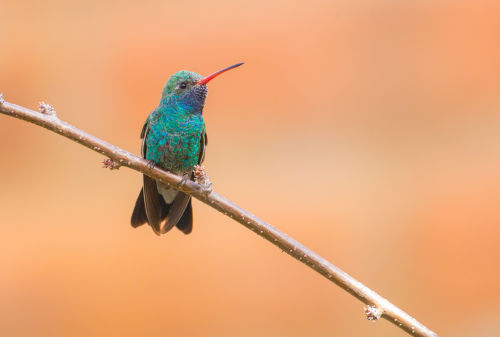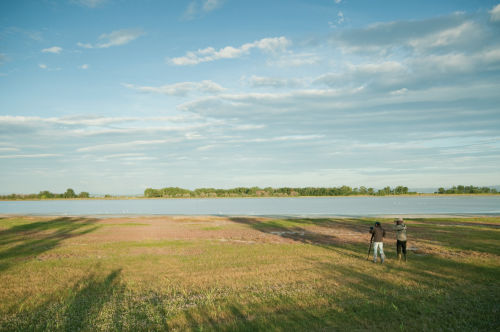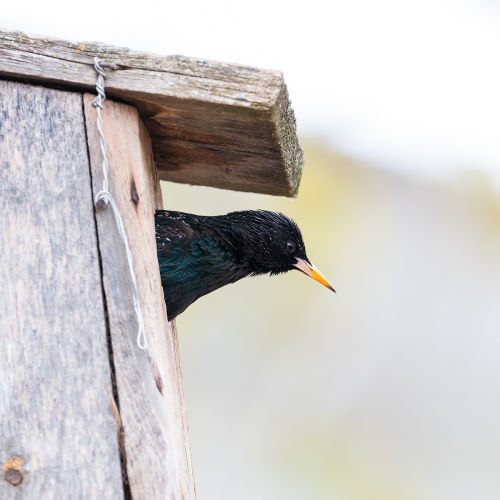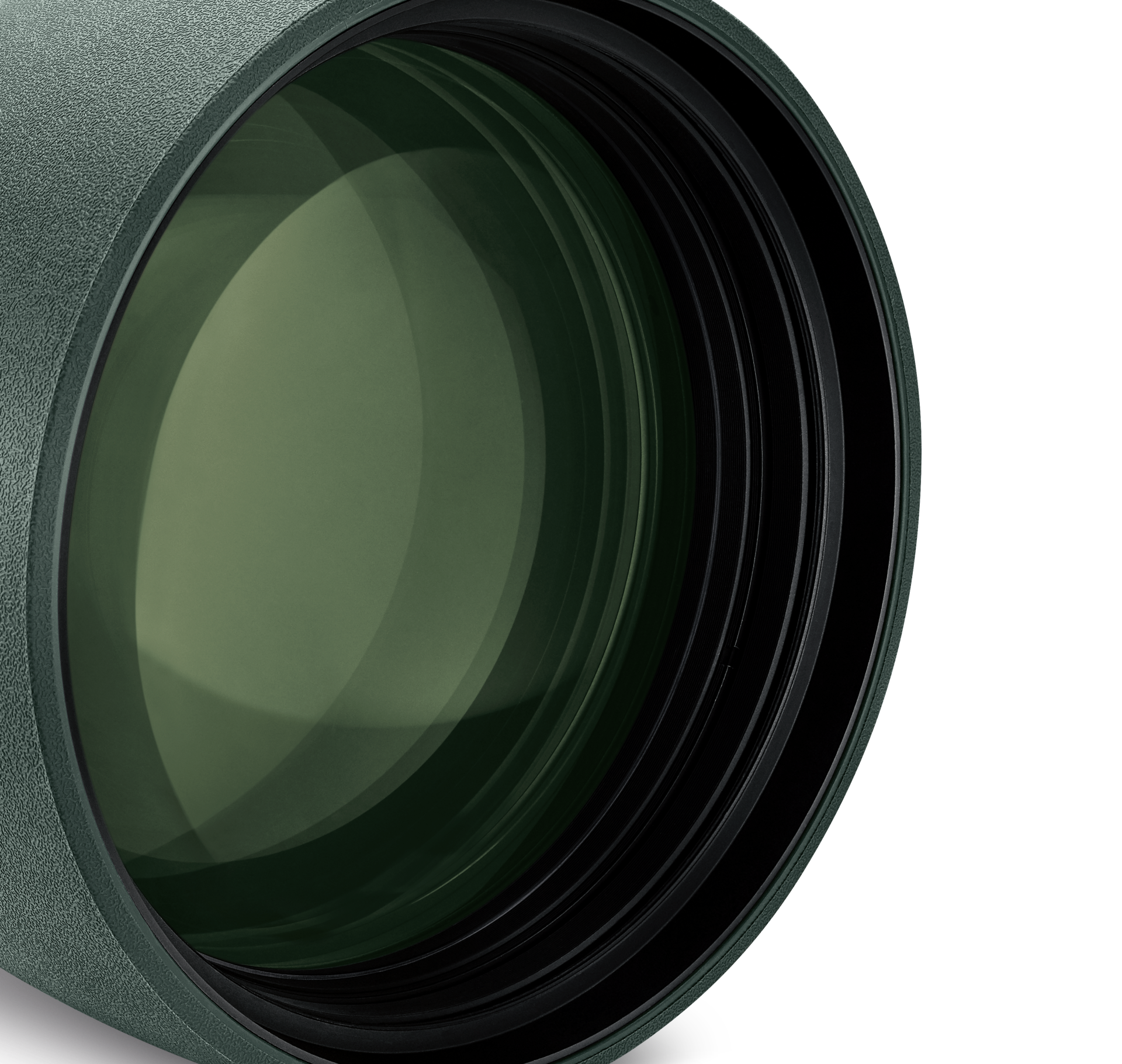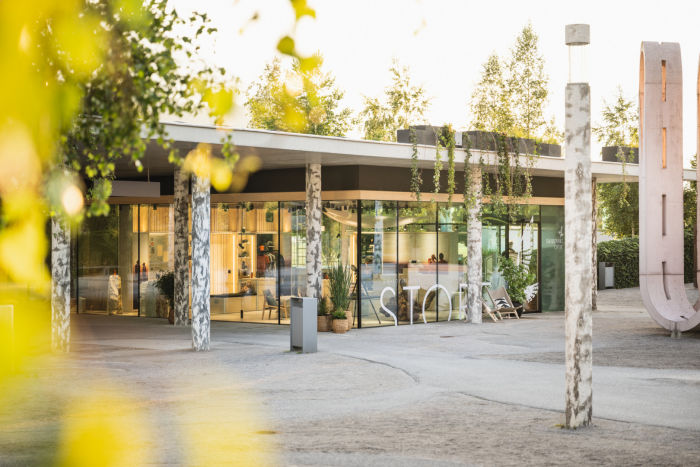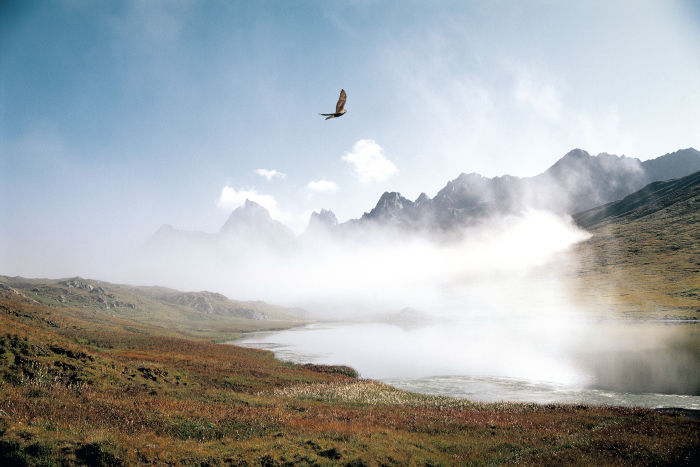There are not many birds rarer or more enigmatic than the Colorful Puffleg. Weighing a mere 3.5 grams (less than a teaspoon of sugar), it boasts plumage that shimmers in shades of emerald and turquoise, accented by snow-white “puffs” of feathers on its legs—a feature unique to pufflegs. These fluffy leg warmers likely play a role in courtship displays, though scientists are still unraveling their secrets.
Like all hummingbirds, it survives on a high-octane diet of nectar and insects, burning energy so rapidly that it must feed every 10–15 minutes. But flowers are rare in these forests, so they must move a lot to get enough energy. Researchers and explorers tell of days on end spent searching for – and not seeing – the Colorful Puffleg at known sites, only for a single individual to suddenly appear, feed briefly, and move on, never to be seen again. They seem to feed on a wide range of flowers, including Bromeliads (like Tillandsia delicatula), wild coffees (Psychotria spp.), the tubular flowers of Neotropical Blueberries (Macleania spp.) and Mountain Grape (Cavendishia bracteataas), and the large pink and white flowers of various Clusia species. The variety of flowers they use, the unpredictability of flowering, the general scarcity of flowers in these forests, and the diversity of other similar-looking hummingbird species make it incredibly difficult to see a Colorful Puffleg.

Rediscovery: A Phantom Returns.
The Colorful Puffleg’s tale begins with mystery. First described in 1967 from three specimens collected west of Popayán, Colombia, the bird then disappeared into the foggy abyss of the Andes. For 30 years, no confirmed sightings occurred, and scientists feared it was extinct. Then, in 1997, a team of ornithologists—braving landslides, relentless rain, and near-vertical terrain—rediscovered the species in the Munchique Natural National Park. The rediscovery was electrifying.
The Colorful Puffleg is now known from four tiny locations in the Andes of southwestern Colombia, where it inhabits thick, dark cloud forests at elevations of about 2,200-2,800 m (7,200-9,200 ft). Its super-specific habitat needs and large-scale clearing of forests mean that its range is a maximum of 14 km² (5.4 sq mi). That is only four times the size of New York’s Central Park! To make matters worse, even in perfect forest habitat, it is incredibly rare, and there are likely only about 250 to 1000 Colorful Pufflegs.

Conservation is about working together
When the Colorful Puffleg was rediscovered in 1997, it was only found within 300 m (1,000 ft) of the original location, and satellite images revealed that much of the potential habitat had already been lost to agriculture and logging, even within the national park. To make matters worse, the pufflegs were no longer being seen at the original rediscovery site. Years of fieldwork and numerous expeditions managed to locate the bird in a nearby, unprotected forest outside the national park. Unfortunately, the forest was about to be clear-cut to produce charcoal. This led to a frenzy of activity to protect this critical habitat from the omnipresent threat of forest clearing. Within a matter of weeks, SWAROVSKI OPTIK, Fundación ProAves, Tropical Birding, and the American Bird Conservancy (ABC) had managed to secure eight properties to create the Mirabilis-Swarovski Reserve. The resulting 2,000 ha (4,900 acres) protected area is one of the most biodiverse spots in the phenomenal Chocó Biogeographic Region, with at least 10 threatened bird species and a series of highly localized and threatened species that are only found in our reserve and the immediate surroundings. These include the Cerro Munchique Marsupial Frog, Cacao Robber Frog, and Western Andes Toad.
Like many great conservation stories, the Mirabilis-Swarovski Reserve is a testament to what collaboration can achieve. However, the Colorful Puffleg’s habitat is under constant threat. Logging, illegal coca cultivation, and climate change are all pressing issues that could erase the bird from existence before we even understand it. These threats not only endanger the Colorful Puffleg but also the entire ecosystem it supports.

How You Can Help: Be Part of the Story
The Colorful Puffleg’s survival depends on a global effort. Here’s how you can contribute:
Donate to organizations like ABC or BirdLife International. Even a small, regular donation can make a real difference to conservation.
Opt for shade-grown coffee and chocolate, which preserve forest canopies.
Climate action helps stabilize cloud forests, the unique habitat of the Colorful Puffleg. Consider renewable energy or carbon offset programs to mitigate the effects of climate change on these forests.
Share the Colorful Puffleg’s story on social media. Your voice can be a powerful tool in raising awareness and garnering support for conservation efforts. Remember, awareness fuels funding and political will, and your contribution can make a significant difference.
Ecotourism in biodiversity hotspots, such as Colombia, supports local economies and demonstrates that living forests are more valuable than those that have been logged.
Epilogue: A Symbol of Resilience
The Colorful Puffleg is more than a bird—it’s a beacon for biodiversity. Its story reminds us that even species on the brink can be saved when humanity chooses to act. As Colombia’s cloud forests whisper in the wind, the Colorful Puffleg’s fate hangs in the balance. But in reserves like Mirabilis-Swarovski, hope takes flight, one iridescent feather at a time.

About
Dale Forbes
Dale Forbes is a lifelong naturalist and conservationist with an MSc in Biogeography. He is the Head of Marketing Strategy & Insight at Swarovski Optik, is a member of BirdLife International's Advisory Board, and is the regional coordinator for eBird in Austria. Dale is the author of Habitats of Europe: A Field Guide for Birders, Naturalists, and Ecologists (Princeton University Press).
Want to help? Visit American Bird Conservancy or BirdLife International to learn how.
Copyright photos © ProAves Colombia
